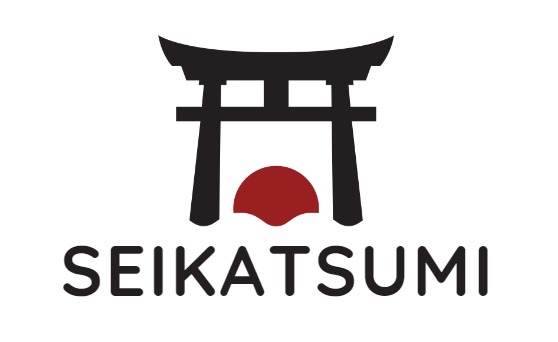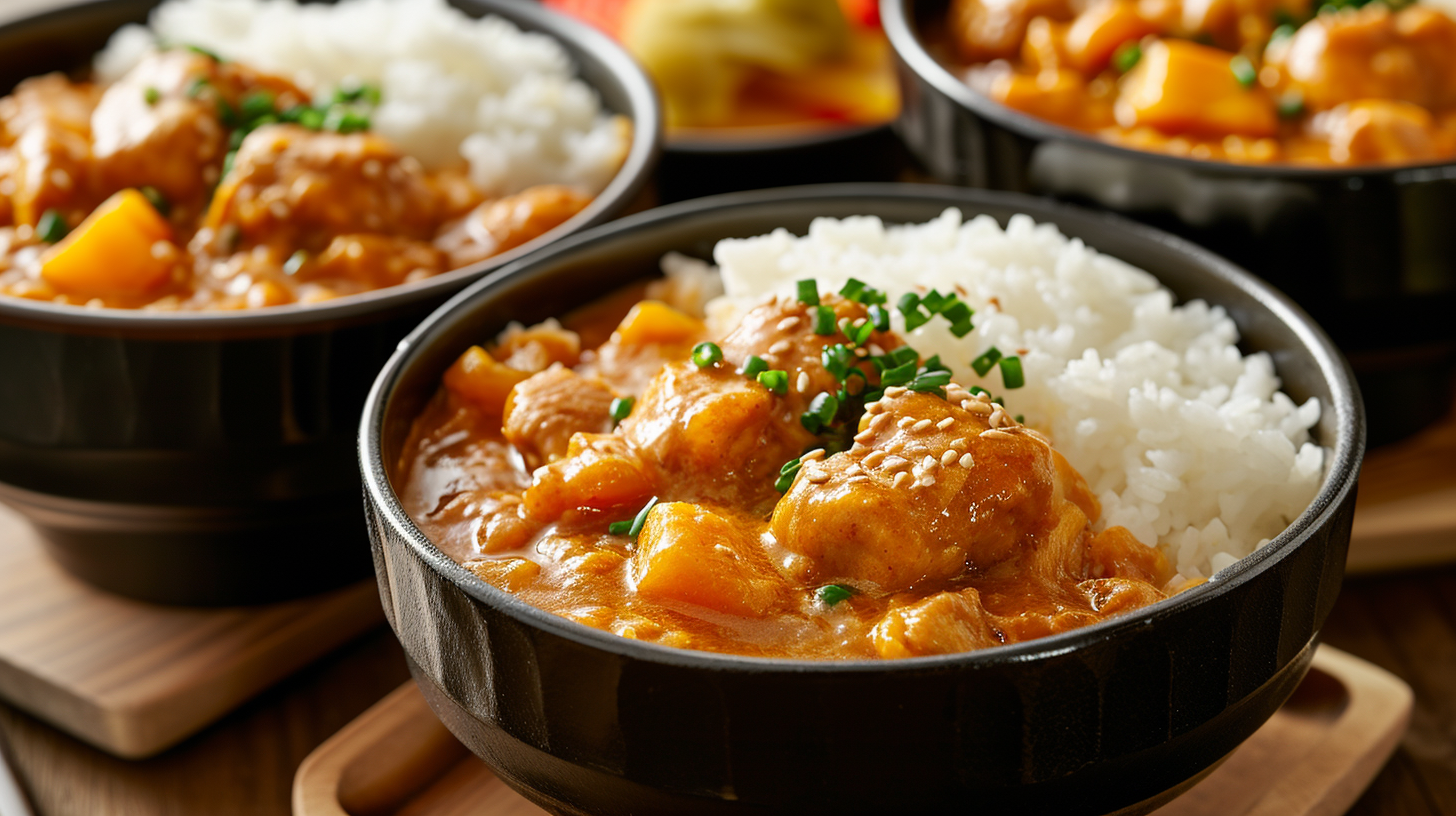I am an absolute fan of curry! It is not only typical in india but also in japan! But what exactly is behind it? I did some research and summarized everything about the delicious japanese curry in this article!
So, don’t wait any longer and dive into the world of one of Japan’s delicious delicacies with me! 🙂
History of Japanese Curry
As a lover of Japanese cuisine, I have always been fascinated by the history of Japanese curry. This delicious dish has a unique taste and texture that sets it apart from other curries around the world.
Origins

The history of Japanese curry dates back to the Meiji era, which began in 1868. At that time, Japan was undergoing a period of rapid modernization and was looking to the West for inspiration.
It was during this time that curry was introduced to Japan by the British, who had been serving it to their sailors for years.
The first known curry rice recipe in Japan was written by Kanagaki Robun in 1872, and it quickly became a popular dish among the Japanese people.
Western Influence
The Western influence on Japanese curry can be seen in the ingredients used to make the dish.
Unlike Indian curry, which is typically made with a variety of spices, Japanese curry is made with a roux, which is a mixture of flour and fat that is used to thicken the sauce.
The roux is then combined with a variety of vegetables and meat, such as potatoes, carrots, and beef, to create a hearty and flavorful dish.
Evolution in Japan

Over the years, Japanese curry has evolved to become a staple of Japanese cuisine. Today, it is served in a variety of ways, including as a curry rice bowl, curry udon, and curry bread.
It has also become a popular comfort food during the winter months, when Japanese winter jackets women and men alike wear to stay warm.
The dish has even been adapted to suit the tastes of different regions in Japan, with some areas adding their own unique twist to the dish.
Ingredients
Winter is here, and I am excited to share with you my favorite recipe for Japanese curry. This hearty dish is perfect for colder days and is sure to warm you up from the inside out.
Japanese curry is a delicious blend of sweet and savory flavors that come from a combination of meats, vegetables, and spices. Here are the key ingredients you’ll need to make this dish:
Curry Roux

The first and most essential ingredient in Japanese curry is the curry roux. This is a mixture of flour, oil, and a blend of spices that give the curry its distinctive flavor and thick, stew-like consistency.
You can buy pre-made curry roux at most Asian grocery stores, or you can make your own from scratch. Homemade curry roux is easy to make and allows you to adjust the spice level to your liking.
Meats and Vegetables

The next key ingredient in Japanese curry is the meats and vegetables. The most traditional meats used in Japanese curry are chicken, beef, and pork. You can use any cut of meat you like, but I recommend using boneless, skinless chicken thighs or beef chuck roast for the best flavor and tenderness.
Vegetables commonly used in Japanese curry include potatoes, carrots, onions, and sweet potatoes. You can also add other vegetables like bell peppers, mushrooms, and peas to make the dish even more flavorful.
Spices and Seasonings
Finally, you’ll need a blend of spices and seasonings to give your Japanese curry its signature taste. The most common spices used in Japanese curry include curry powder, garam masala, and cumin.
You’ll also need soy sauce, Worcestershire sauce, and ketchup to add depth and sweetness to the dish. Don’t forget to add a pinch of salt and pepper to taste.
Now that you have your ingredients ready, it’s time to start cooking. In the next section, I’ll show you how to make the perfect Japanese curry.
Preparation Techniques
Cooking Methods

When it comes to cooking Japanese curry, there are a few different methods you can use.
One popular option is to use curry roux blocks, which are pre-made blocks of curry seasoning that you can simply add to your pot of ingredients. Another option is to make your own curry roux from scratch using flour, oil, and a variety of spices.
Regardless of which method you choose, it’s important to cook your curry low and slow to allow the flavors to meld together. You can cook your curry on the stovetop, in a slow cooker, or even in an Instant Pot for a quick and easy meal.
Flavor Enhancements
While Japanese curry is delicious on its own, there are a few flavor enhancements you can add to take it to the next level.
One option is to add a splash of soy sauce or Worcestershire sauce for a savory umami flavor.
You can also add a bit of honey or sugar to balance out the spice and acidity of the curry.
Another way to enhance the flavor of your curry is to add in some unique ingredients.
For example, you can add grated apple to your curry for a touch of sweetness and texture. Or, you can add in some Japanese pickles or a dollop of Japanese mustard for a tangy kick.
Serving Suggestions

When it comes to serving Japanese curry, there are a few classic options to choose from. One popular choice is to serve it over a bed of steamed white rice, which helps to soak up all of the delicious sauce.
You can also serve your curry with a side of pickled vegetables or a simple salad to add some freshness to your meal.
For a heartier meal, you can serve your curry with a side of breaded and fried pork cutlets, also known as tonkatsu.
Or, you can top your curry with a soft-boiled egg or some crispy fried onions for some added texture and flavor.
Hey you! Are you interested in more food? Then be sure to check out our top food articles! You definitely can’t miss it!
Japanese Kawaii Food: Perfect Guide to Cute and Delicious Japanese Cuisine 2024
Low Carb Japanese Food 2024: The Best Guide for Delicious and Healthy Food
Japanese Bento Box: Your Guide Preparing The Best Bento Box In 2024!
Regional Variations
Hokkaido Style

Hokkaido-style curry is known for its rich and indulgent flavor. The key difference between Hokkaido-style curry and other regional variations is the use of butter in the roux, which gives the sauce a creamy texture.
Hokkaido-style curry also often includes local vegetables such as corn and potatoes, which add to the heartiness of the dish.
Kansai Style

In the Kansai region, which includes cities such as Osaka and Kyoto, the most common meat used in Japanese curry is beef.
Kansai-style curry is often served with pickled vegetables, such as pickled ginger and pickled shallots, which add a tangy contrast to the rich and savory sauce.
Okinawa Style

Okinawa-style curry is known for its use of bitter melon, a local vegetable that is believed to have health benefits. The bitter melon is cooked in the curry sauce, giving the dish a slightly bitter flavor that is balanced by the sweetness of the other ingredients.
Okinawa-style curry is often served with rice and a side of fukujinzuke, a type of pickled radish.
Whether you prefer the creamy richness of Hokkaido-style curry or the tangy contrast of Kansai-style curry, there is no denying that Japanese curry is a delicious and comforting dish that is perfect for warming up on a cold winter day.
Nutritional Information
Are you a fan of Japanese curry? This hearty dish is a staple in Japanese cuisine and is enjoyed by many around the world.
Caloric Content
Japanese curry is a flavorful dish that is typically made with meat, vegetables, and a curry sauce. The caloric content of Japanese curry can vary depending on the ingredients used and the portion size.
According to MyFitnessPal, a serving of Japanese curry (280g) contains 218 calories, 21.3g of carbs, 12.3g of fat, and 4g of protein.
It is important to keep in mind that the caloric content of Japanese curry can increase significantly if you add rice or other high-calorie sides to your meal.
Health Benefits

Japanese curry contains a variety of ingredients that offer health benefits. For example, the curry sauce typically contains spices such as turmeric, which has anti-inflammatory properties and may help reduce the risk of chronic diseases.
Additionally, the vegetables used in Japanese curry provide essential vitamins and minerals that are important for overall health.
Dietary Considerations

If you’re watching your sodium intake, be mindful of the amount of curry sauce you use in your dish. According to Sanraku, a typical serving of Japanese curry contains 2300mg of sodium, which is the recommended daily limit for most adults.
To reduce the sodium content of your meal, consider using low-sodium broth or making your own curry sauce from scratch.
Additionally, if you have dietary restrictions or preferences, it’s important to be mindful of the ingredients used in Japanese curry.
For example, if you’re vegetarian or vegan, you may want to use tofu or other plant-based protein sources instead of meat. If you have gluten intolerance, you may need to use gluten-free ingredients to make your curry sauce.
Pairings and Accompaniments
As someone who loves Japanese curry, I know that what you serve with it can make all the difference.
Here are some of my favorite pairings and accompaniments that will take your curry experience to the next level:
Rice and Curry
Rice is a classic pairing with Japanese curry. It’s simple, easy to make, and helps balance out the richness of the curry.
I prefer using short-grain white rice, but you can also try brown rice or even mixed grain rice for a healthier option. To add some extra flavor, you can also try cooking the rice with some chicken or vegetable broth instead of water.
Bread and Curry

If you’re looking for something different than rice, bread is a great option. You can try serving your curry with some naan bread or even a baguette.
The bread will help soak up the curry sauce and add an extra layer of texture to your meal. If you’re feeling adventurous, you can also try making some Japanese-style bread like shokupan or milk bread.
Pickles and Garnishes
Pickles and garnishes are a great way to add some brightness and freshness to your curry. Some classic Japanese pickles like takuan (yellow pickled daikon) or umeboshi (pickled plums) are great options.
You can also try adding some fresh herbs like cilantro or green onions. And don’t forget the fried garlic! It’s a popular garnish in Japan and adds a delicious crunch to your curry.
Modern Innovations
Fusion Dishes
One of the most exciting modern innovations in Japanese curry is the fusion of traditional Japanese curry with other cuisines. For example, some restaurants now offer a “curry ramen” dish that combines the rich, savory flavor of Japanese curry with the comforting warmth of ramen.
Another popular fusion dish is “curry udon,” which is a hearty and satisfying combination of Japanese curry and thick, chewy udon noodles.
Curry Snacks

Japanese curry has also been adapted into snack form, making it easier than ever to enjoy the delicious flavors of Japanese curry on the go. Curry pan, for example, is a popular snack that consists of a crispy breaded exterior filled with a warm and savory Japanese curry filling.
Curry chips, which are thinly sliced and fried potatoes seasoned with Japanese curry powder, are another popular snack option.
Vegetarian and Vegan Options
In recent years, there has been a growing demand for vegetarian and vegan options in Japanese cuisine, and Japanese curry is no exception. Many restaurants now offer vegetarian and vegan versions of their curry dishes, typically made with a vegetable or soy-based protein instead of meat.
These dishes are just as flavorful and satisfying as their meat-based counterparts, and are a great option for those with dietary restrictions.
Recipe Ideas
I love Japanese curry because it’s hearty, flavorful, and so easy to make. Here are some of my favorite recipe ideas that are perfect for any occasion:
Chicken Curry

One of the most popular types of Japanese curry is chicken curry. This dish is made with juicy pieces of chicken, carrots, and potatoes, all cooked in a rich, savory, and mildly spicy curry sauce. You can serve it with rice or noodles for a complete meal.
To make chicken curry, start by sautéing onions, garlic, and ginger in a large pot. Add the chicken and cook until browned on all sides. Then, add the carrots and potatoes and stir to combine.
Pour in water or chicken broth and bring the mixture to a boil. Reduce the heat and let it simmer until the vegetables are tender. Finally, add the curry roux and stir until it’s dissolved and the sauce is thickened.
Beef Curry

If you prefer beef over chicken, you can make beef curry instead. This dish is similar to chicken curry, but it’s made with tender chunks of beef instead of chicken.
You can use any cut of beef you like, but I prefer using chuck roast because it’s flavorful and affordable.
To make beef curry, start by browning the beef in a large pot. Remove the beef and sauté onions, garlic, and ginger in the same pot. Add the beef back to the pot along with carrots and potatoes.
Pour in water or beef broth and bring the mixture to a boil. Reduce the heat and let it simmer until the beef is tender. Finally, add the curry roux and stir until it’s dissolved and the sauce is thickened.
Vegetable Curry

If you’re looking for a vegetarian option, you can make vegetable curry. This dish is made with a variety of vegetables, such as potatoes, carrots, onions, and bell peppers. You can also add tofu or chickpeas for some protein.
To make vegetable curry, start by sautéing onions, garlic, and ginger in a large pot. Add the vegetables and stir to combine.
Pour in water or vegetable broth and bring the mixture to a boil. Reduce the heat and let it simmer until the vegetables are tender. Finally, add the curry roux and stir until it’s dissolved and the sauce is thickened.
Curry Rice

Curry rice is a popular dish in Japan that’s often served with Japanese curry. It’s a simple dish that’s made by cooking rice and serving it with curry sauce on top.
You can also add some toppings, such as pickles, scallions, or fried eggs, for some extra flavor and texture.
To make curry rice, start by cooking rice according to the package instructions. Then, ladle some curry sauce on top of the rice and serve immediately.
You can also mix the curry sauce with the rice before serving for a more even distribution of flavor.
I hope these recipe ideas inspire you to try making Japanese curry at home. With a few simple ingredients and some patience, you can enjoy a delicious and comforting meal that’s perfect for any occasion.
Cooking Tips and Tricks
As someone who loves Japanese cuisine, I have found that cooking Japanese curry can be a bit tricky. However, with a few tips and tricks, you can make the perfect Japanese curry dish.
Use the Right Curry Roux
One of the essential ingredients in Japanese curry is the curry roux. There are different types of curry roux available in the market, and each one has a unique flavor.
Some roux cubes have a mild flavor, while others are spicy. Choose the one that suits your taste. If you prefer a mild flavor, then go for the golden curry brand. On the other hand, if you like spicy food, then go for the Vermont curry brand.
Add Vegetables at the Right Time

When cooking Japanese curry, it’s essential to know when to add vegetables. Some vegetables, such as carrots and potatoes, take longer to cook than others. Therefore, it’s best to add them first and let them cook for a few minutes before adding other vegetables like onions and bell peppers.
Cook the Meat Separately
If you’re using meat in your Japanese curry, it’s best to cook it separately. This way, you can control the cooking time and ensure that the meat is cooked to your liking. You can use chicken, pork, or beef, depending on your preference. Once the meat is cooked, add it to the curry sauce and let it simmer for a few minutes.
Add Umami Flavors

To enhance the flavor of your Japanese curry, add umami-rich ingredients such as soy sauce, miso paste, and Worcestershire sauce. These ingredients will give your curry a savory, meaty flavor that is sure to impress.
My absolute favorite Curry Style
I absolutely adore Japanese curry, especially when it’s made with tender chicken and served with fluffy rice.
The combination of rich, flavorful curry sauce and perfectly cooked chicken is simply irresistible. To make the experience even better,
I love to enjoy it with a side of warm and soft naan bread. This dish is undoubtedly my all-time favorite!

Frequently asked Questions
What is Japanese curry?
Japanese curry is a milder, sweeter curry made with roux, vegetables, and protein served over rice.
What are common ingredients in Japanese curry?
Common ingredients include potatoes, carrots, onions, meat, and curry roux blocks.
How can I make Japanese curry at home?
Sauté onions, add protein, vegetables, water, curry roux, simmer, and serve over rice with optional toppings. Tada!
If you liked this blog article about Japanese Curry, don’t forget to follow us on Pinterest so you don’t miss any more tips.
Let us know, which of the above ist your absolute favorite Dish!


